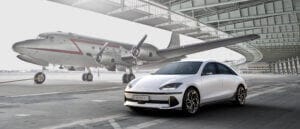Space and practicality
Hyundai increased the size of the latest Tucson, and much of that has gone into making it roomier than its predecessor. There’s a great deal of space on offer too, and it will go down well with families. There’s a great deal of room in the back, even for taller passengers, while the boot size varies between 558 and 616 litres, depending on the version.
It’s the Hybrid version that is the most practical, interestingly, but all offer plenty of room. With the seats folded, there’s up to 1,799 litres of room on offer.
Engines
Hyundai removed diesel-engined Tucsons as part of this new generation, but there’s still a plentiful choice of petrol and hybrid models. All versions are based around a 1.6-litre turbocharged petrol engine too.
Kicking off the line-up is the regular 148bhp petrol version mated to a six-speed manual gearbox, which is the only non-electrified model on offer. Select it with a seven-speed automatic, however, and it then gets a fuel-saving mild-hybrid system. You can also choose it with four-wheel-drive, with this taking the power up to 177bhp.
Up next is the standard Hybrid version, which produces 227bhp, and uses a six-speed automatic. With a 7.8-second 0-60mph time, this is the quickest Tucson in the line-up. Above this sits the plug-in hybrid, which gets a second electric motor, making it four-wheel-drive and putting out 261bhp in all.
Running costs
On paper, where fuel economy is concerned, you’ll want to look at the plug-in hybrid, as once its 13.8kWh battery is charged, Hyundai claims up to 38 miles can be achieved on electric, which allows for a 201.8mpg fuel economy figure and 31g/km CO2 emissions. Nearly all your miles will need to be done on electricity to achieve such figures, however.
If you aren’t able to charge regularly, it might be worth looking at the regular hybrid, which Hyundai claims 50.4mpg and 127g/km CO2 emissions for. The regular petrol models can prove thirsty, however, especially the four-wheel-drive 177bhp model that struggles to manage 40mpg on paper.



